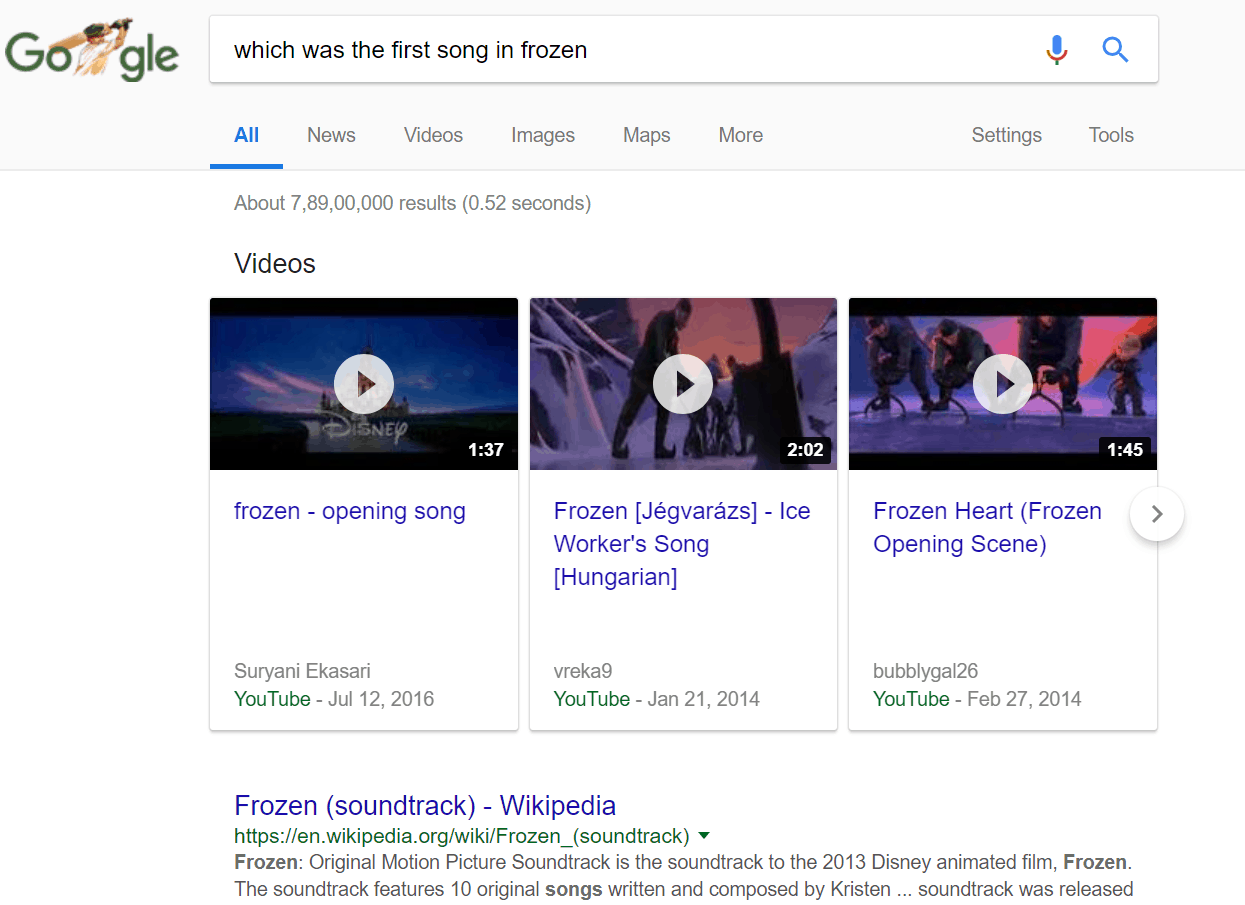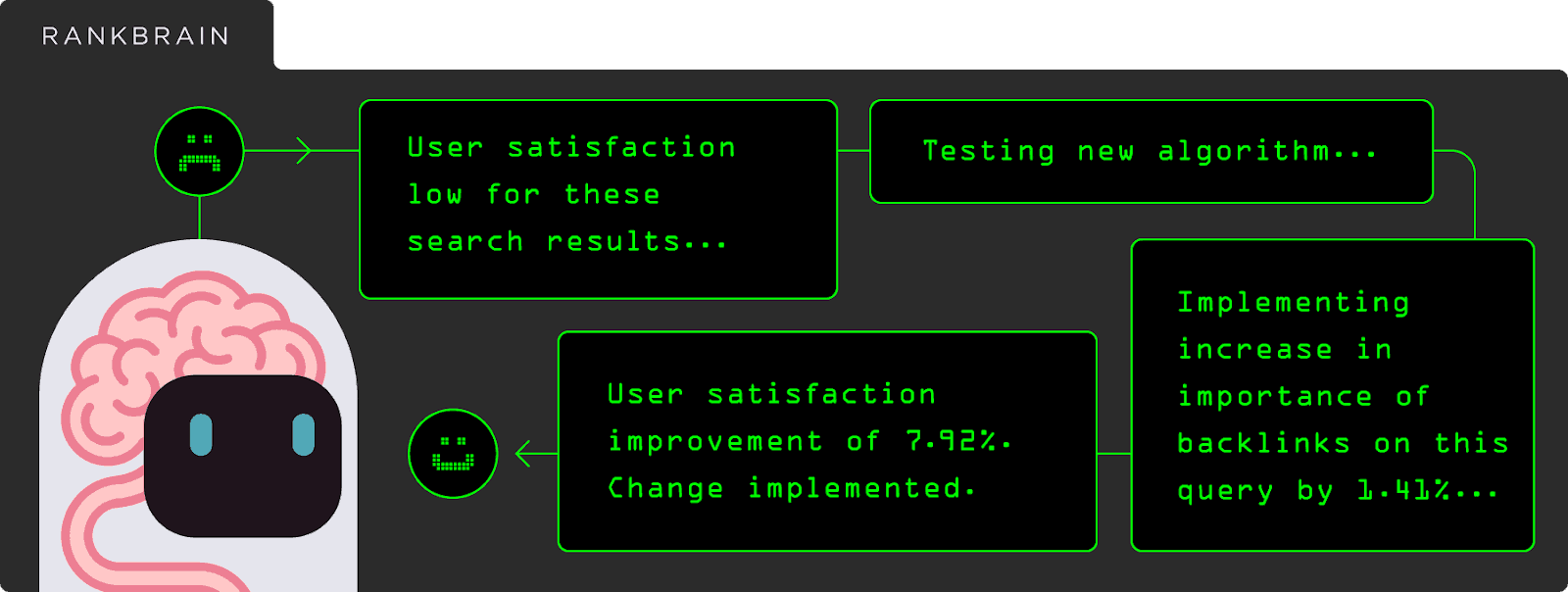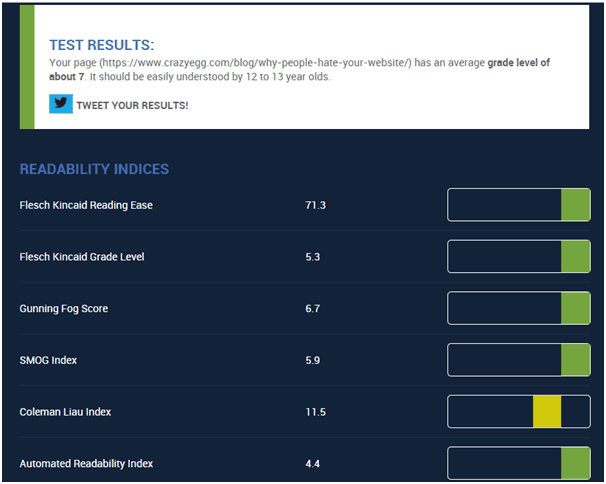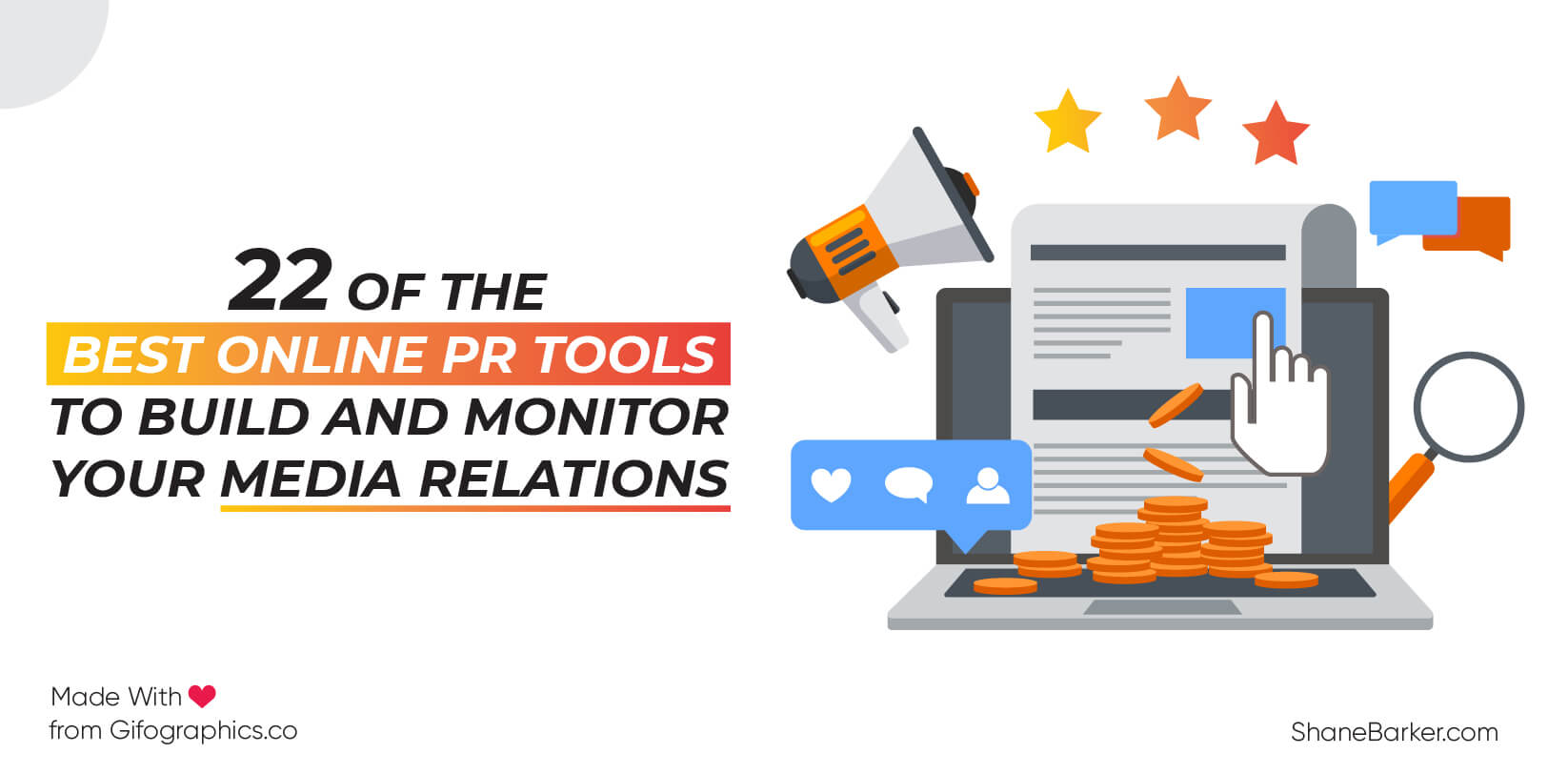On October 26, 2015, Google made a very interesting announcement that took the SEO world by storm. They let people in on a big secret – that they’re using Artificial Intelligence to enhance their search results.
What amazed (even alarmed) everyone, even more, was that Google declared RankBrain as one of three most important ranking factors.
Now you must be wondering, what are the other two?
In March 2016, a Search Quality Senior Strategist at Google confirmed that the other two are content and links. He also confirmed that there isn’t any specific order of importance assigned to the top three criteria.
But, coming back to the topic. This Machine Learning algorithm was touted as a game-changer for Google search results.
Why exactly?
Well, for starters, RankBrain beat the company’s human experts at page selection in internal tests.
Of course, you now know that it wasn’t a fad.
Whether you like it or not, it is here to stay and serve more relevant and meaningful search results to users. So, let’s get straight into how RankBrain works and how you need to optimize your content for this algorithm.
Table of Contents
How Does Google Understand Your Search Queries?
Every day, Google receives around 15% of search requests that are entirely new. Search queries it has never seen before. Now, 15% might not look like a big number.
However, Google receives around 3 billion search requests every day in various forms such as – voice searches, web searches, or image searches. So, 15% of 3 billion amounts to about half a billion search requests.
That is a significant number for anyone.
And Google has no historical data about these requests. Which pages might be a good fit for such queries? How to decide their rankings?
Google has no way of knowing. So, before RankBrain came into being, Google used to make the best guess of what might be the most relevant results. As you can imagine, this wasn’t an optimum solution. Google’s best guess might not be good enough for users.
To solve this problem, RankBrain came into the picture. It tries to understand your query like a human being. It breaks down a request into a set of “word vectors,” which it then uses to understand what the query means.
Google uses this understanding to return more relevant results. What makes the new algorithm different is, it does not just improve results for the current query. With time and with more new queries, RankBrain keeps on improving search results for other new queries as well.
How Efficient is RankBrain?
Let me explain that with a simple example. Suppose, you enjoyed a particular song in a movie you watched and would now like to download it. But, you’ve no idea what it was called. So, you search using this query – “which was the first song in frozen.”
Now, this is quite ambiguous right? But here’s what you’ll see.
Image via Google
However, Google is still able to return results for the first song in the movie “Frozen” with links to various YouTube videos. This is because Google is able to actually understand that you are referring to “Frozen” the movie, and not as an adjective.
That’s exactly how intelligent RankBrain has made Google. It can connect the dots to give you relevant search results. It can understand what you want even if your search query isn’t specific.
In addition to this, it is able to automate a lot of manual tests and can tweak the Google search algorithm. This makes the entire process of enhancing the search algorithm faster and more efficient.
When Google tested RankBrain against their senior search specialists, RankBrain had an 80% success rate as opposed to humans at 70%. This gives you an idea of how effective it is. So,
How does all of this affect your website’s ranking?
Let’s take a look at how RankBrain can help you.
How Can You Optimize Your Website for RankBrain?
If you want to obtain a good rank in Google searches, you need to optimize your website and content for RankBrain. In the absence of these techniques, your website might quickly lose relevance and you’ll notice a drop in your click-throughs.
How big of a difference are we talking about?
If a website’s click-through rate decreases, the amount of user data for the website decreases. When that happens, RankBrain has fewer data points to judge its relevance. This means that your website won’t show up in the top results. Over a period of time, your visibility will greatly reduce.
How quickly can this happen?
Quicker than you think. As Google’s confidence on RankBrain increases, you’ll soon see that your old SEO tactics are no longer bearing fruit.
So, how should you optimize your website and content for Google’s new algorithm? Here are a few surefire ways of getting RankBrain to work in your favor.
1. Build Your Website’s Reputation
Do you understand what kind of content your audience likes to read?
What type of content do they spend more time on?
Spend some time to understand what your audience likes to read. What type of content do they spend more time on? For example, if your target audience is new moms, they’re most likely to be interested in topics related to infants or toddlers. Understand what your audience likes, and create more content around such topics.
However, creating content isn’t enough. To build your website’s reputation, you need to work on obtaining quality backlinks. You can guest post on high-authority websites that have a similar target audience. This can give you more traffic as well as greater visibility.
Try to create content that’s engaging. Feel free to embed videos, images, gifs, or any other media content. This can help to increase engagement which helps to build your reputation. The more time a user spends on your website, the more relevant it appears to RankBrain. You should also share your content on social media to get greater engagement.
2. Optimize for Medium Tail Keywords
The way RankBrain works, long tail keywords are likely to be history soon. Earlier Google used to fetch results based on exact keywords used. So, you would get different results for “best speakers for computer” and “best computer speakers.”
However, RankBrain understands that both these search queries mean the exact same thing. So, it gives the same search results. The best way to optimize for RankBrain would be to optimize for medium tail keywords. Optimizing for medium tail keywords provides for automatic optimization for long tail keywords in RankBrain.
This also requires you to create more quality content. This makes it easier to optimize it for medium tail keywords.
3. Create Content that Addresses User Intent
RankBrain puts the focus back on content. If you have good content, you can easily optimize your website. If your content is not good, your CTR will drop. Readers will not come back to your website and it will lead to a lower ranking in RankBrain.
It might seem like RankBrain is making it tougher for websites to get better rankings.
But there’s a silver lining to it.
You don’t need to focus too much on finding relevant keywords. If you’re writing an article about desserts, RankBrain will pick up “desserts” and its related terms as keywords. So, words like “sweets” and “sweet dish” will also be considered as keywords.
Why is this good?
Because with RankBrain, your article might rank for queries related to desserts as well as sweet dishes. So, keyword density shouldn’t be your focus anymore. You should focus more on addressing user intent through your content. This is because quality content is all that matters for readers. Quality content focused on user intent will bring in higher CTR.
Since RankBrain improves the quality of search results, it also collects information about user satisfaction.
For example, if someone does opens the #1 result for a query but doesn’t find it useful and goes to the next one in the SERP. And they continue to do so until they find what they are looking for and stay on that page longer, this is an indication of satisfaction.
As a result, those results towards the top may notice a drop in their rankings. Also, the one that was able to satisfy the user’s intent, gets a boost in rankings.
So, it’s important to make your content informative, engaging, and useful. Try to pick topics that your target audience might be interested in and write longer, useful content that answers all possible questions about that topic.
Image via Backlinko
4. Increase Your Click-Through Rates
Google’s quality score algorithm rates your website based on your keywords and quality of content. The click-through rate is an important part of the quality score algorithm. It gives an idea of the overall user experience of the website.
The higher the CTR, the better it is for your website.
As RankBrain learns from human decisions, you need to ensure that users click on your links. A higher click-through rate is critical for the success of your RankBrain SEO strategy. A great way of getting a higher CTR is to ensure that your content is well-written. You need to optimize your landing pages to increase your CTR.
Wikipedia has a high CTR, authority, and a great reputation. And so, it ranks higher on Google searches. Wikipedia outranks a really large number of websites. This happens because the website’s content is relevant, engaging, and people come back to it.
5. Improve Your Dwell Time
Backlinko lists dwell time as one of the most important ranking factors. This means Google pays attention to the amount of time users spend on your page. If people spend more time, Google understands that your content is relevant and interesting. Because of this, Google will give preference to your page while ranking.
So, it’s important for you to ensure that visitors don’t bounce off from your site easily.
So, how do you improve dwell time on your site?
Start by having a solid SEO strategy in place. In addition to it, make sure your content is easy to read, scannable, and engaging for readers. Instead of writing huge chunks of text, make sure your paragraphs and sentences are short. Divide your content into relevant headings and subheadings.
If your content consists of huge blocks of text and complicated sentences that are difficult to understand, there’s a good chance people wouldn’t want to finish reading it. So even if they are interested in the topic, they’ll probably leave soon after landing on your page.
If you are not sure whether your content is easy to read or not, you can use readability tools to assess it. One of the most useful resources for this is WebFX’s Readability Test Tool.
Just enter the URL of your webpage. Their tool will analyze the content of the web page and tell you how readable the content is. For all of the parameters, try to get the meter to turn green. A red or orange score signifies that the content on your page is not easy to read.
Image Source: WebFX
Dwell time is all about keeping your visitors hooked. Another way of engaging them is to include internal links in your web pages. Through internal links, you can redirect visitors to other articles on your website.
Just make sure you add internal links that are relevant to the content on your web page. This is an easy way to keep them on your site longer while also providing them with valuable content.
In addition to this, page loading speed and website layout are also crucial factors that can affect your site’s dwell time. Overall, keep in mind that proving a smooth user experience should be your top priority.
6. Focus on 10x Content
RankBrain is compelling content marketers to rethink the way they perceive content. Instead of creating content for specific keywords, the focus is now shifting to entire topics.
What does this mean?
If you’re writing about digital marketing, you would also develop content around SEO and email marketing. Your goal should be to create a cluster of articles that provide in-depth information about a core topic.
SEO expert, Rand Fishkin, calls it “10x content.” According to him, it is content that is 10 times better than the other content available on the internet on the same topic or keyword.
Think of 10x content as a comprehensive guide or an ebook. Each subtopic in it is a chapter which is also explored in detail. The focus of 10x content is on providing value to the audience by giving them answers to the most frequently asked questions.
Engagement and virality aren’t the top priorities. But the general belief is that if your content is valuable, people will read and share it. Because of this, 10x content can impact your rankings.
With 10x content, Bright Gauge was able to get to the top of the SERPs.
Ready to Optimize Your Site for Google RankBrain?
If you are looking to optimize for RankBrain, you should focus on all of the above-mentioned steps. It involves creating engaging content and optimizing it for medium tail keywords. It also involves techniques to increase CTR. All of this will lead to a better reputation for your website.
RankBrain is affecting the way Google returns search results, every day. This makes your rankings obtained through older SEO techniques, really vulnerable.
In all, RankBrain has made searches more user-oriented and that is helpful in many ways. So, put your focus on content and engage your audience well. Otherwise, sooner or later, you may be lost in oblivion.
Do you know of any other ways that RankBrain affects SEO? Let me know about it in the comments section below.








![digital marketing for startups: the strategies to use in [year] 11 best digital marketing strategies for startups](https://shanebarker.com/wp-content/uploads/2021/09/best-digital-marketing-strategies-for-startups.png)

Thanks a lot. I will be following these practices now.
I think this is one of the most vital information for me. And I am glad to read your article.
That’s so nice of you to say. I’m so happy that you liked my article about optimizing Google RankBrain.
It’s great to see Google applying machine learning to provide the most relevant results to users. Right now Rankbrain is said to be the third most impactful algorithm. Thanks for these tips!
You just got it right!
Thanks for sharing this valuable information. I will follow these steps and I think I will see relevant results.
Glad to help. Follow the steps mentioned in the more than happy the article and let me know how it worked for you, I’ll be more than happy to hear it from you.
Great post! Thanks for sharing this information.
Hi Ray, thank you so much! I’m glad that you liked my article about optimizing Google RankBrain. Keep visiting for more tips and tricks.
That is very helpful.
Hi Afzal, thank you so much! So happy to hear that my post about Google RankBrain was helpful for you.